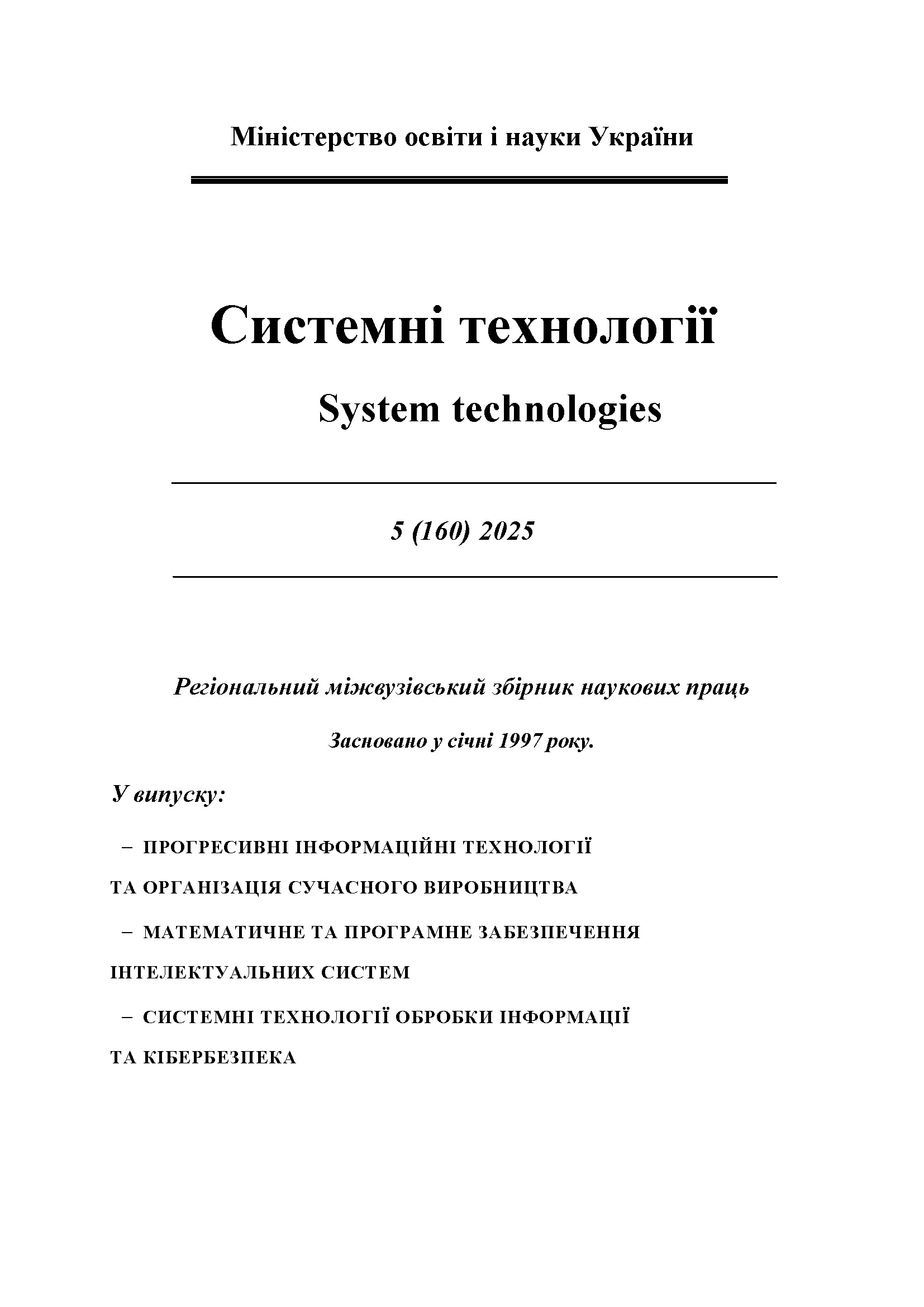Numerical simulation of the interaction of a shock wave with a supersonic laminar boundary layer in the presence of heat and mass exchange with the surface
DOI:
https://doi.org/10.34185/1562-9945-5-160-2025-08Keywords:
numerical simulation, shock wave, laminar boundary layer, heat and mass transferAbstract
The results of parametric numerical experiments on the influence of heat and mass transfer on flow separation during the interaction of an oblique shock wave with a laminar boundary layer are presented. An implicit finite-volume algorithm for solving the Navier-Stokes equations for arbitrary coordinates, based on the Roe scheme for convective terms, is implemented. The second order of accuracy in space was provided by using the symmetric Jamecon flux limiter. The numerical algorithm was verified on the problems of transonic and supersonic laminar and turbulent flows when compared with experimental data.
The study was carried out with the aim of comparative analysis of the possibilities of the flow separation control using heat and mass transfer with a streamlined surface under the same conditions of the shock wave/boundary layer interaction.
Spatial pressure distributions, pressure and skin friction coefficient distributions along the plate, profiles of density, dynamic viscosity coefficient, longitudinal velocity components and momentum in the laminar boundary layer are presented. The main physical factors de-termining changes in the structure of the separation interaction under heat and mass transfer conditions were identified. The effect of heat transfer with the plate was manifested primarily in changes in the profiles of density and dynamic viscosity coefficient, which significantly de-pend on temperature. Removal of slowed particles from the boundary layer leads to a greater filling of the velocity profile by mass transfer with the practically constant value of the dy-namic viscosity coefficient on the surface.
Based on the analysis of the results obtained, it was found that the main factor in pre-venting flow separation is the increase in the longitudinal component of the momentum dur-ing plate cooling by heat transfer and the removal of slowed particles by mass transfer. Therefore, despite the different physical nature of the impact, heat and mass transfer with the surface has a similar resulting effect on the size and structure of the supersonic separation zone.
Using heat and mass transfer it is possible to prevent the occurrence of a separation zone in two-dimensional supersonic flows.
References
Chang P.K. Separation of Flow. // Pergamon Press, 1970 – 777 p.
Green J.E. Interactions between shock waves and turbulent boundary layers. // Progress in aerospace sciences. Vol. 11, 1970 – p. 235 340.
Adamson T.C., Messiter A.F. Analysis of two-dimensional interaction between shock waves and boundary layers. // Annual review of fluid mechanics. Vol. 12, 1980. – p. 103-138.
Lewis J.E., Kubota T., Lees L. Experimental investigation of supersonic laminar, two-dimensional boundary-layer separation in a compression corner with and without cooling. // AIAA Journal, V. 6, No 1, 1968 – p. 7-14.
Spaid F.W., Frishett J.C. Incipient Separation of a Supersonic, Turbulent Boundary Lay-er, Including Effects of Heat Transfer. // AIAA Journal, V. 10, No 7, 1972 – p. 915-922.
Back L.H., Cuffel R.F. Shock wave/turbulent boundary-layer interactions with and without surface cooling. // AIAA Journal, V. 14, No 4, 1976 – p. 525-534.
Bernardini M., Asproulias I., Larsson J., Pirozzoli S., Grasso F. Heat transfer and wall tem-perature effects in shock wave turbulent boundary layer interactions // Physical Review Fluids December 2016 – 17 p.
Pasha A.A., Juhany K.A. Effect of wall temperature on separation bubble size in laminar hypersonic shock/boundary layer interaction flows. // Advances in Mechanical Engineering, Vol. 11, No.11, 2019 – P.1–10
Murugesan P, Srikrishnan, Mohammad A., Velamati R.K. Numerical Study of Wall Heat Transfer Effects on Flow Separation in a Supersonic Overexpanded Nozzle // Energies, Vol,16, 1762, 2023 – 16 p.
Yuan X., Tong F., Li W. Wall-attached temperature structures in supersonic turbulent boundary layers // Physics of Fluids, Vol. 34, 115116, 2022 – 14 p.
Hakkinen R.L., Greber I., Trilling L., Arbanel S.S. The interaction of an oblique wave with a laminar boundary layer. // NASA Memo 2-18-59 W. 1959. – 49 p.
Pylypenko A. O., Polevoy O. B., Prykhodko O. A. Numerical simulation of Mach number and angle of attack influence on regimes of transonic turbulent flows over airfoils. // TsAGI Science Journal, Vol.43, No.1, 2012. – P. 1–36.
Tannehill J.C., Anderson D.A., Pletcher R.H. Computational fluid mechanics and heat transfer (Second edition) // Taylor & Francis, New York, 1997. – 785 p.
Roe P.L. Approximate Riemann schemes. // J. Computational Phys. Vol. 43., 1981. – P. 357-372.
Roe P.L. Characteristic-based schemes for the Euler equations. // Annual review of fluid mechanics. Vol. 18., 1986. – P. 337-365.
Jameson A. Analysis and design of numerical schemes for gas dynamics 1: Artificial dif-fusion, upwind biasing, limiters and their effect on accuracy and multigrid convergence // In-ternational Journal of Computational Fluid Dynamics. Vol. 4., 1995 – Р.171-218.
Downloads
Published
Issue
Section
License
Copyright (c) 2025 System technologies

This work is licensed under a Creative Commons Attribution 4.0 International License.















